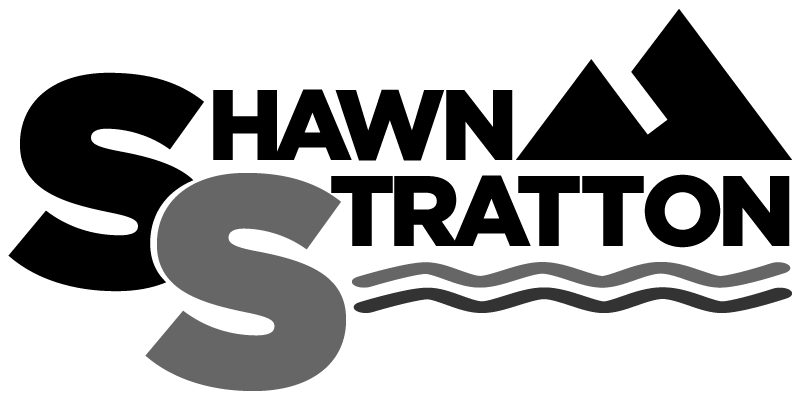
by Shawn Stratton | Jun 22, 2016 | Blog Posts
I was recently speaking with a participant at a conference I was presenting at and he was telling me about the loss of productivity because of their use of an older, slow piece of software. Many times, when people are underperforming, it is because of the individuals’ behaviors but often the cause is lack of resources or the system. When the equipment or system is causing poor performance in a department, it is the manager’s role to do everything possible to influence the senior leadership to provide adequate equipment and / or alter the system. We have heard the organizational change has to come from the top down. Yes, this may be true, but what about if you are in a middle management leadership position. Your employees are looking to you for leadership and to create any changes needed to support them in their roles. Too often senior leaders are making decisions for the organization without direct knowledge of what is really needed and the impact it will have. In the LEAN LEADERSHIP model that Toyota made famous, organizations seek to bring their decision making to the bottom of the leadership hierarchy as often as possible. Tapping into the knowledge of frontline workers by asking them what they need to perform their jobs faster and better, organizations can save an enormous about of time and money. As a workplace leader, your responsibility is to make it easier for your team to do their job. That’s not saying you need to make the job easy for them. You need to prevent or remove obstacles obstructing them in the process...

by Shawn Stratton | Jun 16, 2016 | Blog Posts
Last week, I presented at a project management conference on leading a safety culture, a culture where near misses are seen as a significant learning opportunity and not as potential disasters that are swept under the rug for fear of reprisal or job loss. A near miss is an unplanned event that did not result in injury, illness, or damage – but had the potential to do so. It is safe to say that of the dozens of the minor and major incidents I was involved in over 15 years of leading expeditions, most, if not all, were successfully resolved due to past learning from documented near miss situations, everything from arranging and paying for an Indian military helicopter to perform a dramatic rescue at 12000 feet in the Himalayas, to managing challenging river crossings in the Yukon to encountering grizzly bears deep in the back country of Alaska. Fortunately, most organizations I worked with had progressive cultures around documenting and learning from near misses. Unfortunately, not all organizations are like this. Recently, I have been speaking with some project managers who work in a culture of fear of disciplinary action for being involved with a near miss incident. This fear has caused them to not want to report near misses and minor incidents. Alternatively, I know of several organizations that have rephrased the term ‘near miss’ to ‘good catch’. I know it is only semantics but in an area that usually conjures up fear, semantics can be important. One company not only expected to report ‘good catches’ on potentially dangerous situations but also have their employees report “good catches’ of...

by Shawn Stratton | Jun 9, 2016 | Blog Posts
Part 2 Most of my life, people have told me I was hardworking, especially my schoolteachers. It always felt a bit odd because I didn’t necessarily feel like I was working harder than anyone else. Perhaps they would say it because I didn’t do particularly well with their testing methods, but still wanted to build my confidence because being called a hard worker by someone of authority feels good. Or perhaps they understood locus of control (LOC) and wanted me to develop a strong external LOC in me from an early age. As I discussed in last week’s post (How Your Locus of Control Explains Your Thoughts, Actions, and Motivations), LOC measures generalized belief in internal versus external control of reinforcement. In the post, I have mentioned an example of how the US Marines develop an internal LOC among their new recruits. Here, I will give another example of how this can be developed in children as well as adults. Don’t Tell Them They Are Smart! Someone’s LOC can be influenced through training and feedback, especially children. New York Times’ business reporter Charles Duhigg highlights one experiment by Stanford physiologist, Carol Dweck to demonstrate this in his book, Smarter, Faster, Better. The experiment gave students in grade 5 a series of challenging puzzles to complete. All were told they did well. Half of them were told they must have worked hard at solving the problems. The other half were told you must be really smart for solving the problems. The second round of puzzles included some easier and more challenging ones. The kids who were praised for their intelligence...

by Shawn Stratton | Jun 2, 2016 | Blog Posts
I was sticking to the back of the group with our slowest team member as we hiked up a remote unnamed peak in the Pelly Mountains in Canada’s Yukon Territory. At the time, I was leading a month long backpacking and canoeing expedition with a group of educators from across North America. Jane was moving steady but slowly. She was not in the best of shape, had limited backpacking experience and had never stood on top of a mountain before. She was determined to make it up the mountain but as things started to get tough, she began doubting herself and expressed many negative thoughts. I knew she was capable of making it to the summit and that she would be overjoyed when she got there. It would be a great confidence boost to her to help her through challenging moments during the rest of the expedition and more importantly, her life back home. When her speed slowed, my encouragement picked up. As we took our final steps to the summit, tears were streaking down from Jane’s eyes, and she belted out “Thanks to the lord, he got me up here!” I was surprised and frankly a little disappointed to hear her comment. In respect to her religious beliefs, I didn’t respond to the comment but I really wanted to say was “I just saw you dig deep and hike up the mountain on your own two feet. You were the one who physically got you here, way to go, awesome job. If you can do this, you can tackle just about any challenge, I’m so proud of you!...
by Shawn Stratton | May 27, 2016 | Blog Posts
If you are reading this in your usual workspace, look around: what does this space say about you? Is it as bare as the day you moved into the space? Does it have the mandatory corporate flare of inspirational posters and the latest promotion? Or, is it decked out with family photos and your children’s artwork? When I have a meeting at a bank, I always notice how sterile their offices feel. There is never any personal effect on display, not even family photos. Last year, I was meeting with my account manager and we were talking about our families. As I looked around, I noticed the only thing on the walls were posters of the latest corporate promotions and on his desk were business cards and a holder for corporate trifold brochures. I had observed this for years but this time I decided to ask him why he didn’t have a photo of his family on the wall or his desk. I was shocked when he said that it was a corporate policy that employees were not allowed to display personal effects in their offices. I thought how sad that is. I am all for having a clean office to meet clients in but come on, you can’t even show a family photo. There have been many studies done on the benefits of having employees decorate their workspaces. If you can provide people with a comfortable workspace, they are more likely to be effective. When we are not comfortable, our attention is divided, not focused. When people customize their workspace they feel a sense of ownership, and an...

by Shawn Stratton | May 12, 2016 | Blog Posts
As I was backpacking around the world, leading expeditions in my 20s, my grandmother back in St. John’s, Newfoundland, was always eager to hear from me on how I was doing. At one point, she actually told me to call her collect from anywhere, so I did. I called her from a remote village in the Himalayas, from an apple orchard in New Zealand and from the Golden Gate Bridge in San Francisco. She was shocked and thrilled each time I called. She would tell my parents how it made her day. The calls were short and usually revolved around the weather at home and where I was, but it didn’t matter. She appreciated the calls so much that each time I called, when I got back to my mailbox there was usually a $10 cheque from her saying thank you for the call. Think of a time someone made you feel great. It probably wasn’t because they gave you a huge or special gift. Most likely it was a small gift or no gift at all, just an action or an experience. Here are 7 ways to make someone feel great today: 1. Write random notes of thanks and support: We all love to be cheered on and we all love to be appreciated. An easy way to show encouragement and gratitude is by writing short notes expressing your feelings. This could be on a post-it note on a colleague’s desk or a well-written Thank You card sent by snail mail, it doesn’t matter. The act of doing is what’s most important. 2. Find out how they like...

by Shawn Stratton | May 4, 2016 | Blog Posts
Writing goals down and sharing your goals with select people has been widely publicized for years as integral elements to goal achievement. But without the correct mindset, as you take on the tasks to achieve your goals, all your efforts of documenting and sharing may fall by the wayside. What you think about while doing the tasks that will lead to your goal can have an enormous impact on your chances for success. In the book Ultra Mindset, Travis Macy highlights research into goal achievement from social psychologist Heidi Grant Halvorson Ph.D. Grant suggests there are two main types of thinking you need to be more effective at for completing goal oriented tasks, be it challenging or monotonous. Thinking of your goals in WHY and WHAT terms will help you be more successful in achieving them. WHY When performing mindless, boring tasks, which don’t require much focus, think in ‘WHY’ terms. Keeping your attention on WHY you want to achieve the goal will help get you energized, stay motivated, or avoid temptation. The next time you are out for a walk in the cold or heat, raking leaves, filing paperwork, doing data entry and your motivation to continue starts to wane, focus your thinking on WHY you are doing it. I remember when I did my first Ironman. The day before the race, they had some guest speakers at the expo. One of the speakers was a world-class triathlon coach and he told the audience that we better know our WHY for wanting to complete the Ironman.He went on to say that there would be several times during the...

by Shawn Stratton | Apr 28, 2016 | Blog Posts
(Note – this week I take a break from my usual leadership content in my post to share with you my experience running the 2016 Boston Marathon. There are many leadership and personal development lessons in this story but I will save those for another post. Enjoy!) The race didn’t go as planned – here’s the story I had mixed emotions about returning to Boston for the first time since I was 50 feet from the bomb shortly after finishing the 2013 marathon. (Related – 2013 Boston Marathon Race Report) I was mostly excited because I was in great shape, injury free, and would get to experience the event with my family this time, with my wife running as well and my kids along to watch. In 2013, I had crossed the finish line and just sat down in one of my favorite restaurants, Max Brenner’s, when the blasts occurred 50 feet away. This year, the plan was for my family to join some friends immediately after the race at the same restaurant to finish the meal I didn’t get the chance to have last time. Ready to Go! Coming into the race, I feel I was in the best shape I had been for any of the 4 previous marathons I competed in. For the first time this year, I worked with a specific running coach who was guiding me through a specific 14 week Boston Marathon training program. The training had gone well for me, experiencing only a few minor injuries along the way, nailing all my workouts in the last 6 weeks and achieving a new...

by Shawn Stratton | Apr 21, 2016 | Blog Posts
As spring is taking shape here in Calgary, it’s great to see so many parents out riding their bike with their kids. The one thing that isn’t so nice and drives me crazy is seeing the kids wearing helmets but the parents’ riding next to them not wearing a helmet. I wonder what they say when their child asks them why they are not wearing a helmet. Are You A Role Model? In a workshop of senior managers I conducted a few weeks ago, I asked them to write down the people they feel they are role models for. Most wrote the names of their younger family members and a few employees. They were not long lists. Then I asked them to write down the role models they have had in their life. The lists were much larger this time. I asked them how many people on your list of role models do not know they are a role model for you? This was an a-ha moment for many of the participants. You see, more people look up to you than you imagine. The quicker you realize this, the sooner you start holding yourself up to a higher standard and start making yourself more accountable for your actions. As a workplace leader, project manager, volunteer, and/or parent, you are a role model for more people than you realize. People look up to you and are watching your every move. They watch how you communicate to them and others verbally, in emails, and in social media, etc. Have you ever been asked for advice on a topic that has caught...

by Shawn Stratton | Apr 15, 2016 | Blog Posts
Next week I will be running my second Boston Marathon, in lite of which I thought I would address the question I often get: why do you run? (Related – 2013 Boston Marathon Race Report) One of the most emotional moments I have ever had in achieving a goal was completing my second marathon. No it wasn’t finishing my first Ironman or the Boston Marathon with thousands of people cheering me on at the finish line. In fact, it was completing the St. John’s Marathon with a dozen or so spectators at the finish. The reason for my emotion was that I had achieved a long time goal of mine, i.e. running a marathon under 3 hours. I didn’t hoot and holler at the finish. No one around would have known the enormity of the moment for me as I choked up and that was just fine. I achieved a massive personal goal that I had worked my ass off for years, that only I cared about, and that is the joy of it. For me, running is a personal goal I have direct control over. A run is completed by only me and for the most part the success and failure I achieve is directly from my actions, not anyone else’s. Many of the other goals in my life revolve around other people, namely business and family goals. Sure, I can have a significant impact in these areas but the results also hinge on the desires and actions of other people. I have sales goals and audience growth goals for my business but at the end of the day, I can’t directly control if someone buys from me or signs...
















